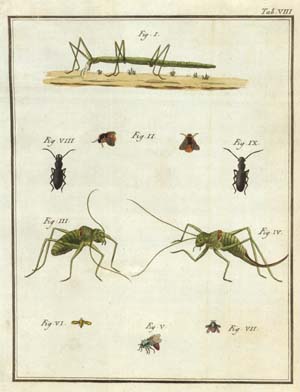|
Leptus Trimaculatus
''Leptus trimaculatus'' is a species of mite in the Erythraeidae family, first described in 1794 by Pietro Rossi as ''Trombidium trimaculatus''. References External links ''Leptus trimaculatus'' occurrence datafrom GBIF The Global Biodiversity Information Facility (GBIF) is an international organisation that focuses on making scientific data on biodiversity available via the Internet using web services. The data are provided by many institutions from around the ... Trombidiformes Animals described in 1794 {{Trombidiformes-stub ... [...More Info...] [...Related Items...] OR: [Wikipedia] [Google] [Baidu] |
Pietro Rossi (scientist)
Pietro Rossi (23 January 1738 in Florence – 21 December 1804 in Pisa) was an Italian scientist and entomologist. Career Rossi's academic career was conducted at the University of Pisa, where he attained a doctorate in philosophy and medicine in 1759. He was then made a professor of logic in 1763, a position he held until 1801, when he finally received the chair for natural history with the special field "insectology", making him the world's first professor of entomology. His publications, particularly ''Fauna etrusca'' (1790) and ''Mantissa insectorum'' (1792), are considered pioneer achievements of entomology and still possess scientific validity in the fields of taxonomy and biological nomenclature. Parts of his collection were once in the possession of Johann Christian Ludwig Hellwig in Braunschweig; these are now in the Natural History Museum of Berlin. In 1793, he was elected a foreign member of the Royal Swedish Academy of Sciences. After his death, the ''Museo entomo ... [...More Info...] [...Related Items...] OR: [Wikipedia] [Google] [Baidu] |
Mite
Mites are small arachnids (eight-legged arthropods). Mites span two large orders of arachnids, the Acariformes and the Parasitiformes, which were historically grouped together in the subclass Acari, but genetic analysis does not show clear evidence of a close relationship. Most mites are tiny, less than in length, and have a simple, unsegmented body plan. The small size of most species makes them easily overlooked; some species live in water, many live in soil as decomposers, others live on plants, sometimes creating galls, while others again are Predation, predators or Parasitism, parasites. This last type includes the commercially destructive ''Varroa'' parasite of honey bees, as well as scabies mites of humans. Most species are harmless to humans, but a few are associated with allergies or may transmit diseases. The scientific discipline devoted to the study of mites is called acarology. Evolution and taxonomy The mites are not a defined taxon, but is used for two disti ... [...More Info...] [...Related Items...] OR: [Wikipedia] [Google] [Baidu] |
Erythraeidae
Erythraeidae is a family of mites belonging to the Trombidiformes. Larval forms of these mites are parasitic on various other arthropods, for example harvestmen, but the adults are free-living predators. These oval mites are rather large, usually reddish coloured and densely hairy. The legs, especially the first and fourth pairs, are long and adapted for running. They have either one or two pairs of eyes and can be distinguished from related families microscopically by the presence of a single claw on the tibia of the palp. The larvae bite a hole into the cuticula of the host and use a stylostome, which acts like a drinking straw, to drink body fluids dissolved tissues. The larvae of two described species of ''Leptus'' feed on bees: ''Leptus ariel'' lives on the European honey bee in Guatemala, and ''Leptus monteithi'' is a parasite of a ''Leioproctus'' species ( Colletidae) in Tasmania ) , nickname = , image_map = Tasma ... [...More Info...] [...Related Items...] OR: [Wikipedia] [Google] [Baidu] |
Global Biodiversity Information Facility
The Global Biodiversity Information Facility (GBIF) is an international organisation that focuses on making scientific data on biodiversity available via the Internet using web services. The data are provided by many institutions from around the world; GBIF's information architecture makes these data accessible and searchable through a single portal. Data available through the GBIF portal are primarily distribution data on plants, animals, fungi, and microbes for the world, and scientific names data. The mission of the GBIF is to facilitate free and open access to biodiversity data worldwide to underpin sustainable development. Priorities, with an emphasis on promoting participation and working through partners, include mobilising biodiversity data, developing protocols and standards to ensure scientific integrity and interoperability, building an informatics architecture to allow the interlinking of diverse data types from disparate sources, promoting capacity building and cat ... [...More Info...] [...Related Items...] OR: [Wikipedia] [Google] [Baidu] |
Trombidiformes
The Trombidiformes are a large, diverse order of mites. Taxonomy In 1998, Trombidiformes was divided into the Sphaerolichida and the Prostigmata. The group has few synapomorphies by which it can be defined, unlike the other major group of acariform mites, Sarcoptiformes. Its members include medically important mites (such as ''Demodex'', the chiggers, and scrub-itch mites) and many agriculturally important species, including the spider mites (Tetranychidae). The superfamily Eriophyoidea, traditionally considered members of the Trombidiformes, have been found to be basal mites in genomic analyses, sister to the clade containing Sarcoptiformes and Trombidiformes. The 2004 classification retained the two suborders, comprising around 125 families and more than 22,000 described species. In the 2011 revised classification, the order now contains 151 families, 2235 genera and 25,821 species, and there were another 10 species with 24 species that present only as fossils. These 151 ... [...More Info...] [...Related Items...] OR: [Wikipedia] [Google] [Baidu] |

_Lorryia_formosa_2_edit.jpg)

